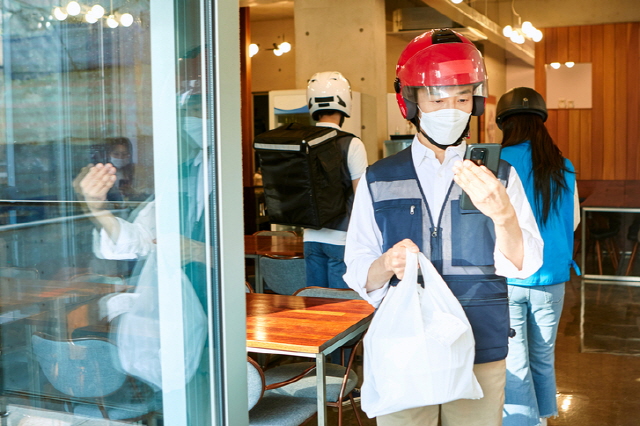If one considers population density in Korea, it is not surprising that delivery service is widely used in Korea, allowing people to be close to everything, including restaurants. Interestingly, there were some historical records that there were paid delivery services in Korea even more than a hundred years ago. In the past, there were only a few categories of products that were delivered to their customers: fried chicken, Chinese food, milk, newspapers, and packages. The period of Korean food delivery culture is distinguished by the advent of delivery apps,
If we think about foods specifically, since there was no delivery fee, delivery foods were appealing options for people who wanted a different menu than home meals but also did not want to do the labor of walking/driving all the way to restaurants outside.
All the restaurants that had delivery services hired their own motorcycle drivers, so they were restaurants that paid for the fee. The motorcycle drivers were called “iron cases (철가방)” since they carried delivery foods in their iconic steel case (image attached below). Although they were, sadly, referred to as undesirable jobs by parents scolding children for being lazy and warning like “Do you want to end up becoming just an ‘iron case’?”, they played a significantly big part in food delivery culture in Korea.
As smartphones spread among people, major delivery apps appeared and opened a totally different era of Korean food delivery culture. Theoretically, those delivery apps are beneficial to both customers and restaurants since they greatly encourage customers’ orders by connecting customers and restaurants without calling or walking but only with a few touches on the applications. Now, almost every restaurant in cities are affiliated with those apps, so customers have a variety of choices to deliver: hamburger, fried chicken, Chinese foods, Japanese foods, raw fish(aka sashimi), fried rice, and even coffee, dessert, and bakery.
However, people nowadays say that there are certain drawbacks to having the convenience of delivery apps. First of all, although it used to be the case that restaurants get their bowls back after customers are done eating, restaurants now use only disposables so that they don’t have to do the chores of getting used bowls back. Along with the concern about environmental pollution, most customers agree that delivery fees are overpriced. The additional fees go to deliverymen and the companies of the delivery apps. However, Kyochon, one of the biggest fried chicken franchises in Korea, started to impose delivery fees, which trend all the other franchises followed.
Fried chicken franchises have invented a number of variations, adapting fried chicken to Korean cuisine. Also, there are various side dishes, for example, such as a cheese ball that became famous with BBQ’s Bburinkle, which is one of the most famous friend chickens in Korea. In conclusion, I am more than excited to see how a fried chicken would change Korean food cultures.


Replies